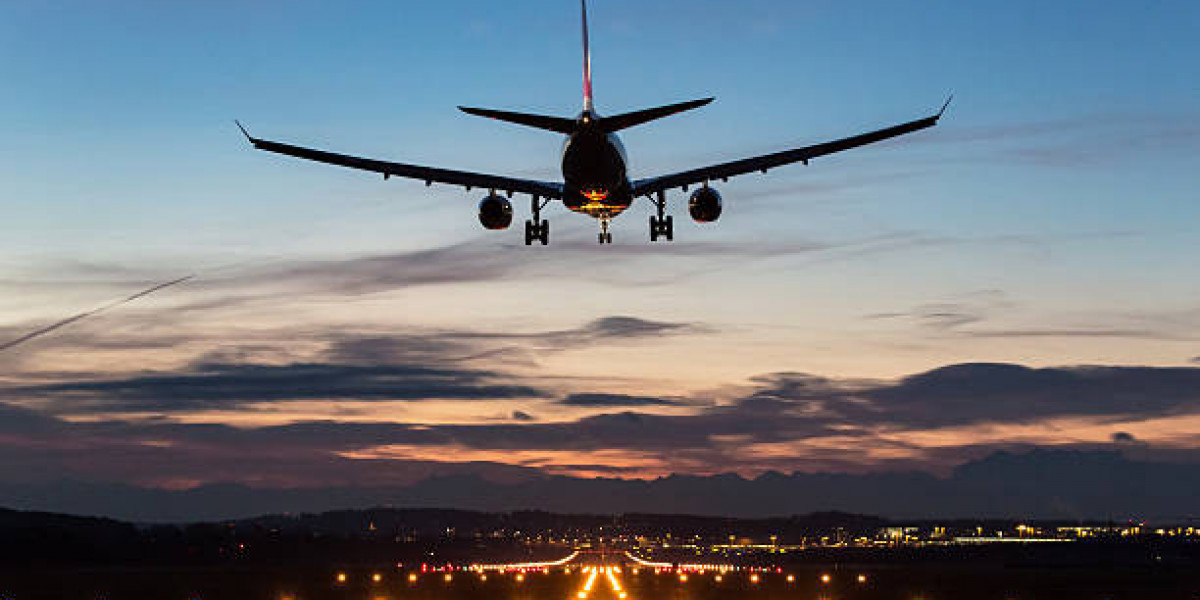The aircraft lighting systems market has witnessed significant growth in recent years, driven by the rising demand for air travel, advancements in technology, and the increasing need for safety and energy efficiency in aircraft. Aircraft lighting systems are essential for ensuring the safety of both passengers and crew during the flight, as well as improving visibility, comfort, and operational efficiency. These systems include various types of lighting solutions such as interior, exterior, emergency, and cockpit lighting, each serving specific functions on different aircraft types.
Market Overview
The global aircraft lighting systems market is expected to expand at a steady rate, bolstered by the growth of the aviation industry. A growing number of airline operators are seeking to replace traditional incandescent lighting with more energy-efficient LED solutions. Furthermore, increasing air passenger traffic and the rising number of aircraft deliveries are major contributors to the market’s expansion. Additionally, the demand for more sophisticated lighting systems that offer better functionality, improved aesthetics, and enhanced safety features continues to drive market innovation.
In 2024, the market size is projected to surpass USD 1.8 billion, with a compound annual growth rate (CAGR) of approximately 5% over the next decade. Several factors, including the increasing need for safer flight operations, the demand for better cabin experiences, and regulatory mandates, have spurred this growth.
Types of Aircraft Lighting Systems
Aircraft lighting systems can be classified into several categories based on their functions and applications. The primary types of aircraft lighting systems are:
Interior Lighting: These systems are designed to enhance the comfort of passengers and crew. Examples include cabin lights, reading lights, galley lights, and floor lighting. The demand for LED-based interior lighting has risen in recent years due to the energy savings and longer lifespan they offer compared to traditional bulbs.
Exterior Lighting: Exterior lighting is crucial for both safety and visibility during flight. It includes navigation lights (red, green, and white lights on wings), anti-collision lights, landing lights, and beacon lights. The growing adoption of energy-efficient solutions and the demand for more powerful lighting systems is increasing the popularity of LED lights in these applications.
Cockpit Lighting: Proper cockpit lighting is vital for the safety and comfort of flight crews. Cockpit lighting systems include backlighting for instruments, overhead lights, and emergency lighting. Advancements in LED technology have significantly enhanced the efficiency and versatility of cockpit lighting systems, leading to better visibility during low-light conditions and reduced energy consumption.
Emergency Lighting: These lighting systems are critical during emergencies, such as power failures or accidents, guiding passengers to exits and ensuring safe evacuation. LED-based emergency lighting is increasingly adopted due to its reliability and long-lasting performance.
Technological Advancements Driving the Market
Technological innovations in aircraft lighting systems have been one of the primary drivers of market growth. LED lighting has become the preferred solution in the aviation industry because of its many advantages over traditional lighting technologies. LEDs are energy-efficient, have longer lifespans, and generate less heat, making them ideal for both interior and exterior lighting applications.
In addition, the integration of smart lighting systems in modern aircraft is gaining traction. These systems use sensors and automation to adjust lighting based on factors such as cabin brightness, time of day, and flight conditions. Such smart solutions not only improve the passenger experience but also contribute to fuel savings by optimizing energy consumption.
Furthermore, the growing focus on reducing carbon emissions in the aviation industry is pushing operators to adopt energy-efficient lighting solutions. LED systems, which consume up to 80% less energy than conventional lighting, are becoming standard in both commercial and military aircraft.
Regional Market Insights
North America dominates the aircraft lighting systems market, primarily due to the presence of leading aircraft manufacturers and operators in the region, such as Boeing, Airbus, and major U.S. airlines. The demand for advanced lighting systems is also being driven by stringent regulatory requirements and the high focus on safety and operational efficiency in the region.
Europe follows closely, with significant market growth attributed to the increasing number of aircraft deliveries, especially from companies like Airbus. Additionally, the region’s focus on developing energy-efficient and environmentally friendly technologies supports the growth of LED-based lighting systems.
The Asia Pacific region is expected to witness the highest growth rate in the coming years, driven by the booming aviation industry in countries like China, India, and Japan. Rising air traffic and the expansion of airline fleets in these regions are expected to propel demand for advanced aircraft lighting solutions.
Market Challenges and Opportunities
Despite the promising growth prospects, the aircraft lighting systems market faces several challenges. The high cost of advanced lighting solutions, especially LED systems, can be a barrier for smaller operators or regional airlines with limited budgets. Furthermore, the complex installation and maintenance requirements of modern lighting systems may pose operational challenges for certain carriers.
On the other hand, there are significant opportunities in the market. The demand for retrofitting older aircraft with more efficient lighting systems presents an opportunity for manufacturers to tap into the large fleet of aging aircraft still in operation. Additionally, advancements in smart lighting and the potential for further energy-saving innovations will continue to open new doors for market growth.
Conclusion
The aircraft lighting systems market is poised for steady growth, driven by technological advancements, the increasing demand for energy efficiency, and the expansion of the global aviation industry. LED technology, smart lighting, and the focus on safety are key trends shaping the market. While challenges remain, the growing demand for advanced lighting systems offers significant opportunities for growth, particularly in emerging regions and with the retrofit of older aircraft. As the aviation sector continues to evolve, aircraft lighting systems will play an increasingly important role in ensuring passenger comfort, crew safety, and operational efficiency.
Learn More : https://www.pristinemarketinsights.com/aircraft-lighting-systems-market-report








